Ten Years Since the Global Financial Crash of 2008, We’ve Been Screwed by Austerity, and Now The Predators Want Our Homes
 Please support my work as a reader-funded investigative journalist, commentator and activist.
Please support my work as a reader-funded investigative journalist, commentator and activist.
Yesterday, September 15, marked the 10th anniversary of the day the new world order that started under Margaret Thatcher and Ronald Reagan, and continued under Bill Clinton and Tony Blair, blew up spectacularly when the banking giant Lehman Brothers went bust, precipitating a global economic crash that was the worst since the Great Depression of 1929.
The crash came about because investment banks like Lehman Brothers had been involved in risky, toxic deals that should never have been legal, primarily involving “sub-prime mortgages” — lending money to buy homes to people who couldn’t afford them, and then packaging those toxic debts up in other complex financial packages.
The collapse of Lehman Brothers, with debts of $613bn, started a domino-like collapse through the entire financial sector, which had previously thought of itself as infallible, and had been supported in this absurd notion by politicians and economists.
In response, governments spent billions bailing out the banks, while everyone else suffered. No senior banking executive faced prosecution for their crimes, but individuals lost money, businesses folded, unemployment was rife, and the easy credit on which so many people depended dried up. Immediately after the crash, it was at least obvious that others were suffering too — building sites across London, for example, lay abandoned, and even the rich felt the squeeze, but salvation, in the UK at least, was soon at hand when the Tories, with the support of the Liberal Democrats, were able to form a government after the general election in May 2010, and immediately set about creating a new narrative — that the problem was government spending, not bankers’ crimes, and that the solution was to cut public spending. Read the rest of this entry »
Andy Worthington: An Archive of Articles About Guantánamo, My UK Housing Activism, Photography and Music – Part 24, January to June 2018
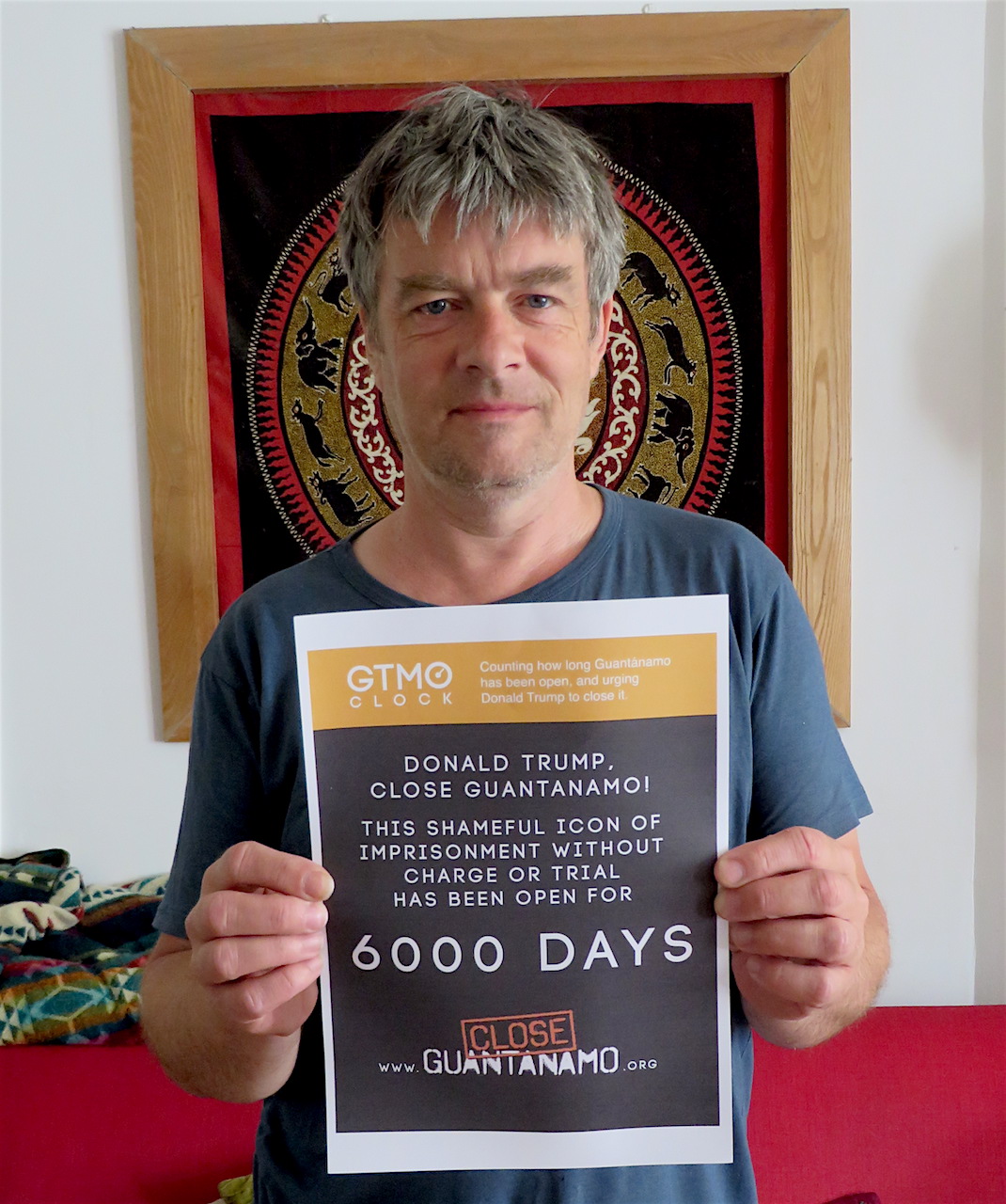 Please support my work as a reader-funded journalist! I’m currently trying to raise $2500 (£2000) to support my writing and campaigning on Guantánamo and related issues over the next three months of the Trump administration.
Please support my work as a reader-funded journalist! I’m currently trying to raise $2500 (£2000) to support my writing and campaigning on Guantánamo and related issues over the next three months of the Trump administration.
This article is the 24th in an ongoing series of articles listing all my work in chronological order. It’s a project I began in January 2010, when I put together the first chronological lists of all my articles, in the hope that doing so would make it as easy as possible for readers and researchers to navigate my work — the 3,000+ articles I have published since I first began publishing articles here in May 2007, which, otherwise, are not available in chronological order in any readily accessible form.
I receive no institutional funding for my work, and so, if you appreciate what I do as a reader-funded journalist and activist, please consider making a donation via the Paypal ‘Donate’ button above. Any amount, however large or small, will be very gratefully received — and if you are able to become a regular monthly sustainer, that would be particularly appreciated. To do so, please tick the box marked, “Make this a monthly donation,” and fill in the amount you wish to donate every month.
As I note every time I put together a chronological list of my articles, my mission, as it has been since my research in 2006-07, for my book The Guantánamo Files, first revealed the scale of the injustice at Guantánamo, continues to revolve around four main aims — to humanize the prisoners by telling their stories; to expose the many lies told about them to supposedly justify their detention; to push for the prison’s closure and the absolute repudiation of indefinite detention without charge or trial as US policy; and to call for those who initiated, implemented and supported indefinite detention and torture to be held accountable for their actions. Read the rest of this entry »
Why We’ve Occupied the Old Tidemill Wildlife Garden in Deptford to Prevent Lewisham Council’s Demolition Plans
 On Tuesday evening (August 28), campaigners occupied the Old Tidemill Garden on Reginald Road in Deptford, London SE8 to prevent Lewisham Council from taking it back on the Wednesday morning (August 29), and boarding it up prior to its planned destruction as part of the proposed re-development of the site of the old Tidemill Primary School.
On Tuesday evening (August 28), campaigners occupied the Old Tidemill Garden on Reginald Road in Deptford, London SE8 to prevent Lewisham Council from taking it back on the Wednesday morning (August 29), and boarding it up prior to its planned destruction as part of the proposed re-development of the site of the old Tidemill Primary School.
The garden is a much-loved community space, and was developed by teachers, parents and pupils from the school 20 years ago. When the school closed, to be replaced by a new academy, the garden was leased to the local community, but now the council wants it back, to destroy it, and the 16 council flats of Reginald House next door, in order to build new housing with the housing association Peabody, some of which be for private sale, with the rest a mixture of Sadiq Khan’s London Affordable Rent (63% higher than social rents in Lewisham) and the scam that is shared ownership.
For many years, campaigners have been working to urge Lewisham Council to re-draw its plans to re-develop the old school site, which, astonishingly, were first proposed ten years ago. The campaigners have relentlessly pointed out that increasing the density of the development on the old school site will allow the council and Peabody to save the garden and Reginald House, but they’re simply not interested in engaging with the local community, or with the residents of Reginald House. 80% of residents do not want to lose their homes but have not been offered a ballot, despite Jeremy Corbyn’s promise last autumn that all proposed demolitions should involve ballots, a position since endorsed by London Mayor Sadiq Khan. Read the rest of this entry »
Year 2, Day 100 of My Photo Project, ‘The State of London’, Recording A City Gutted by Greed Since the Olympics
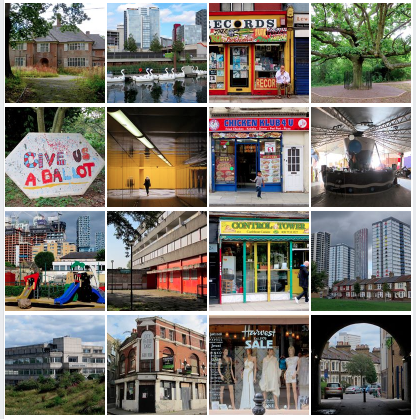 Please support my work as a reader-funded investigative journalist, commentator and activist.
Please support my work as a reader-funded investigative journalist, commentator and activist.
Yesterday, August 18, marked one year and 100 days since I began posting a photo a day on ‘The State of London’, a Facebook page I established on May 11 last year, marking five years since I first began cycling around London on my bike, taking photos of whatever interested me. You can see all the photos to date here.
In the six years and three months since I began this photo-journalistic project, I have been out on my bike almost every day, cycling many thousands of miles across all of London’s 120 postcodes, and discovering that what interests me are the changing seasons, the changing weather, the River Thames and the capital’s other rivers, its canals, its parks, and my own idiosyncratic take on the built environment, in which I’m drawn to the old, the odd, the idiosyncratic, the run-down, the derelict and the abandoned, and also to social housing — the great post-war estates, currently facing an unprecedented threat from councils across the political spectrum, who, financially squeezed by central government, are entering into deals with property developers to demolish their estates and to build over-priced new developments from which almost all the existing tenants are priced out, an epidemic of social cleansing that is largely unnoticed by those who are not directly affected by it.
When these homes are destroyed, social rents (generally set at around a third of market rents) are also conveniently wiped out, replaced by properties for private sale, for market rent, for “affordable” rents that aren’t affordable at all, being set at 80% of market rents, and for shared ownership, an alarming scam designed to fool renters into believing that they are property owners. To add to Londoners’ woes, housing associations, which have increasingly taken over councils’ housing role since the Thatcher years, have also been severely squeezed, and many have, in response, also joined the private property development gravy train. Read the rest of this entry »
New Videos by The Four Fathers: ‘Rebel Soldier’, ‘Masters of War’ and ‘Grenfell’ Recorded Live
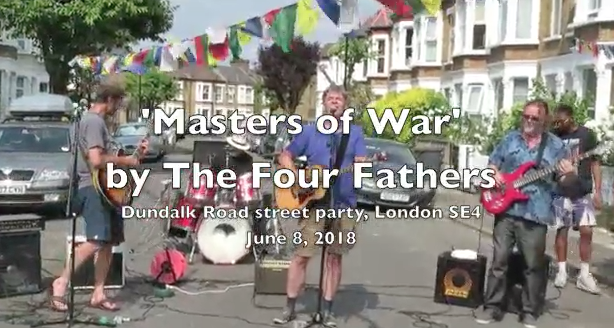 It’s been some time since I’ve posted an update about the activities of my band The Four Fathers, so I’m hoping to amend that by posting some recent videos — of ‘Rebel Soldier’ and ’Masters of War’, recorded at a street party in Brockley, in south east London, of ‘Grenfell’, recorded at a summer solstice party in the Old Tidemill Garden in Deptford, and of another song from that party, ‘Kicking the Poor’, used as a housing campaign song in Lewisham, where I live.
It’s been some time since I’ve posted an update about the activities of my band The Four Fathers, so I’m hoping to amend that by posting some recent videos — of ‘Rebel Soldier’ and ’Masters of War’, recorded at a street party in Brockley, in south east London, of ‘Grenfell’, recorded at a summer solstice party in the Old Tidemill Garden in Deptford, and of another song from that party, ‘Kicking the Poor’, used as a housing campaign song in Lewisham, where I live.
‘Rebel Soldier’, a driving reggae number, is an old folk song, which I gave a new tune and a reggae groove more years ago than I care to remember, while living in Brixton after I left university. It’s been a live favourite since The Four Fathers first started four years ago, and we generally open our set with it. The studio recording, from our first album, ‘Love and War’, is here, and the live video is also on Facebook here.
‘Masters of War’ was written and recorded by Bob Dylan in 1963, and, sadly, its sentiments remain just as relevant today as they were back then. It’s another live favourite, and another song we’ve been playing regularly since we first got together in 2014. The studio recording isn’t available online, but it is on the CD of ‘Love and War’, which you can buy here. Our second album, How Much Is A Life Worth? is also available on CD or to download, and you can also individually download any of our songs. Prices start at just 60p. Read the rest of this entry »
Photos: The London Protest Against Donald Trump’s UK Visit, July 13, 2018
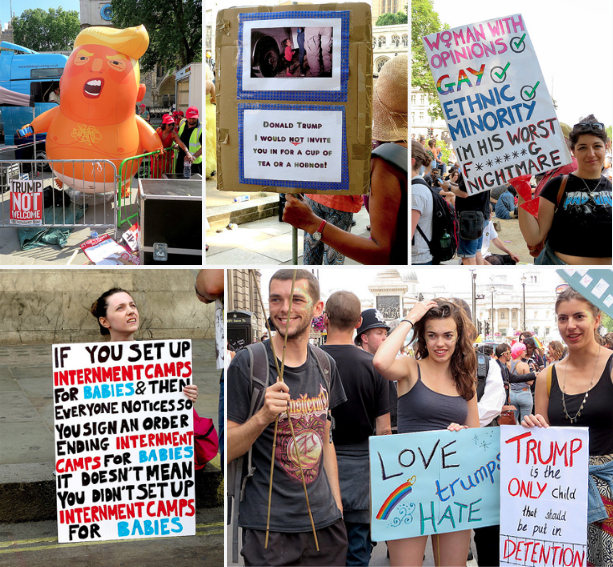 Please check out my photo set on Flickr!
Please check out my photo set on Flickr!
And please support my work as a reader-funded investigative journalist, commentator and activist.
So yesterday a huge protest against Donald Trump, on his first visit to the UK since he became the US president 18 months ago, took place in London. The organisers estimated that almost 250,000 people had turned up, and I was delighted to see so many witty handmade placards, and so many young people showing up to tell Trump that he is not welcome here. Much of the focus, of course, was on his position as the world’s most powerful sexual predator, but there were also numerous placards taking aim at his recent and thoroughly disgraceful immigration clampdown, when he separated children from their parents and imprisoned them.
I was, of course, delighted to see large numbers of people — and particularly women and girls — protesting against Trump, but from the beginning of his presidency, when a visit was first planned, and then called off because of the anticipated scale of protests against him, I have made a point of stating that, while I understand the particular horror of Trump’s role as a sexual predator and people’s opposition to him on that basis, on everything else we should be out on the streets every day protesting against the vile Theresa May and her vile government. In her six years as home secretary, May was persistently racist, xenophobic and Islamophobic, and, of course, was behind the “hostile environment” for immigrants that led to people who were part of the post-war Windrush generation form the Caribbean being forcibly sent back to their countries of origin, despite having lived in the UK for decades.
That said, it is clear that the sheer size of yesterday’s protest ought to give us hope for the future, as it represented, in many ways, a coming together of the many, many different groups of people affected by Donald Trump and what he represents, and if we can do this for Trump then perhaps we can do it again once he’s gone home, and we’re still stuck wth the most ideologically bankrupt government of my lifetime, in which most of the issues that brought people together in such large numbers yesterday are still as relevant — a right-wing, racist, xenophobic, Islamophobic government composed mostly of old white people, hopelessly embroiled in a Brexit nightmare of their own making, that, like Trump’s election, needs to be seen as the death rattle of this old white world. Read the rest of this entry »
Grenfell and the Social Housing Crisis: How Kensington and Chelsea Council Behaved Like “A Property Developer Masquerading as a Local Authority”
 Please support my work as a reader-funded investigative journalist, commentator and activist.
Please support my work as a reader-funded investigative journalist, commentator and activist.
In a meeting of the Housing, Communities and Local Government Committee on June 20 to discuss ‘Local Authority Support for Grenfell Tower Survivors’, Ed Daffarn, one of the survivors of last June’s entirely preventable tower block fire, in which 72 people died, reported an exchange with Kensington and Chelsea Council’s Chief Executive, Barry Quirk, who took on that role a week after the fire, which cuts to the heart of the problems facing those living in social housing in Britain today.
Daffarn told MPs that, at a meeting wth survivors’ organisation Grenfell United, Barry Quirk “said that RBKC [the Royal Borough of Kensington and Chelsea] were a property developer masquerading as a local authority.”
Daffarn added, “Think about that. They were property developers masquerading as a local authority. They failed to keep us safe because they had higher priorities – getting their hands on the land, this massive goldmine they had.”
The confession by Quirk, who was formerly the Chief Executive of Lewisham Council, is significant because, when every aspect of social housing is made subservient to the money-making opportunities offered by housing development, residents of social housing are no longer actually safe in their homes. Read the rest of this entry »
Celebrating 400 Days of My Photo Project ‘The State of London’
 Please support my work as a reader-funded investigative journalist, photographer, commentator and activist. Check out all the photos to date here.
Please support my work as a reader-funded investigative journalist, photographer, commentator and activist. Check out all the photos to date here.
Back in March 2011, my life changed when I was hospitalised after a blood clot had turned two of my toes black. Doctors at St. Thomas’s Hospital, opposite the Houses of Parliament, saved my toes — a mercy for which I am eternally grateful to the NHS — but after I recovered, my life changed again when I began cycling across London on a daily basis — and taking photos everywhere I went — in May 2012.
When I got ill, I had managed to give up smoking, which would otherwise have killed me, but I then started piling on the pounds instead, on a steady diet of biscuits and cakes, and so getting back on my bike on a daily basis seemed like the perfect way to get fit.
I’d been a cyclist since I was about four years old, but like many useful habits, it had become sidelined as I smoked too much, and also as a result of my obsessive sedentary lifestyle as a writer, researcher and commentator and activist on Guantánamo, which had consumed my life since 2006. Read the rest of this entry »
Photos: Grenfell 1st Anniversary – The Silent Walk and the Solidarity March
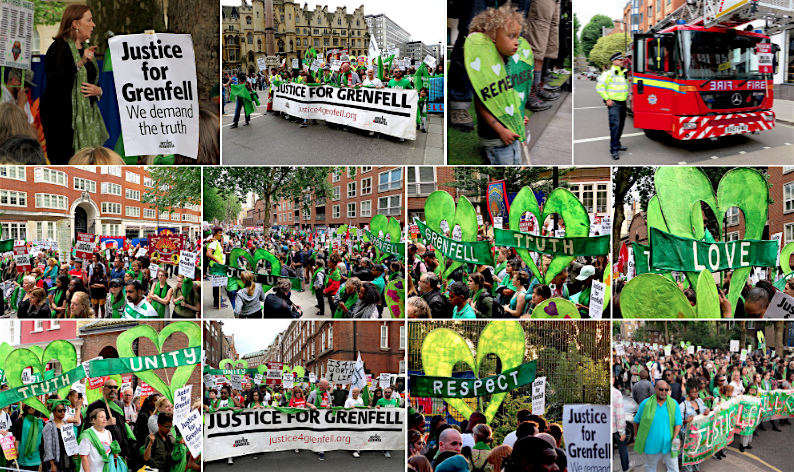 Please check out my photo sets on Flickr – of the Silent Walk in Kensington on June 14, 2018 and of the Solidarity March in central London on June 16, 2018.
Please check out my photo sets on Flickr – of the Silent Walk in Kensington on June 14, 2018 and of the Solidarity March in central London on June 16, 2018.
Please also feel free to support my work as a reader-funded investigative journalist, commentator and activist.
It’s just over a year since the defining event in the UK last year — the Grenfell Tower fire, an entirely preventable disaster in west London, in which 72 people died when an inferno engulfed a 24-storey tower block in North Kensington in west London, and I’m pleased to be posting photos from two recent Grenfell-related events as my contribution to trying to make sure that there is no let-up in the pressure for justice and accountability following the first anniversary of the disaster last June.
The first photo set is of the Silent Walk for Grenfell on the actual anniversary. Silent Walks have taken place on the 14th of every month since the fire, in the vicinity of the tower, and on the anniversary, on Thursday June 14, thousands of people turned up, from across London as well as from other places in the UK, to show solidarity with the survivors and the local community. The Silent Walks are extremely moving experiences, and the 1st anniversary walk was, of course, no exception.
The second photo set is from the Grenfell Solidarity March in central London, starting and ending outside 10 Downing Street, and including a visit to the Ministry of Housing, Communities and Local Government on Marsham Street, organised by the survivors’ group Justice4Grenfell and the Fire Brigades Union. Read the rest of this entry »
Grenfell One Year On: How Can We Feel Safe in a Country That Regards Everyone in Social Housing as Inferior?
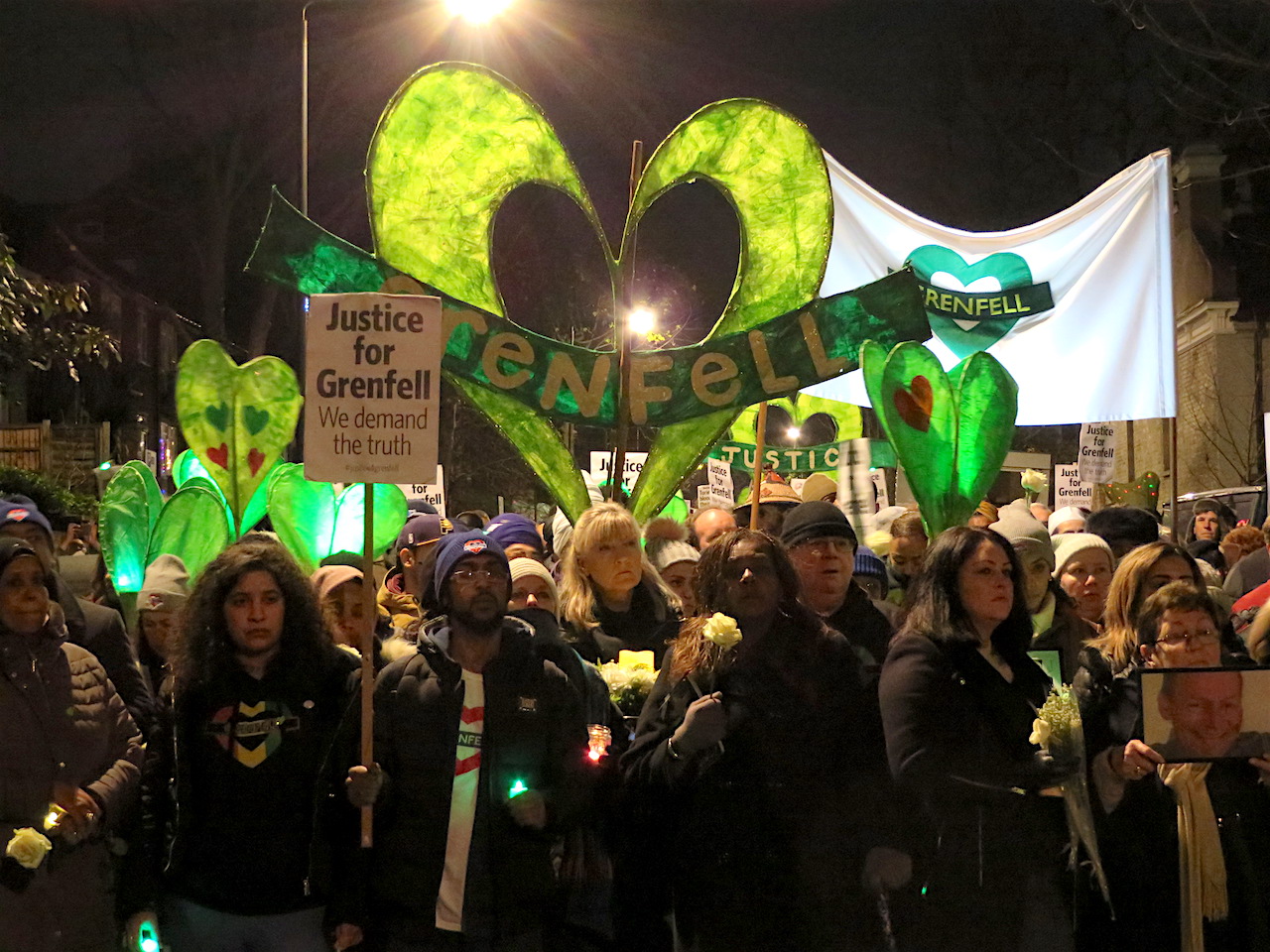 Exactly one year, ago, an inferno engulfed Grenfell Tower, a 24-storey tower block in north Kensington, in west London, with such speed and ferocity that 71 people died, and a 72nd person died this January as a result of injuries sustained that night.
Exactly one year, ago, an inferno engulfed Grenfell Tower, a 24-storey tower block in north Kensington, in west London, with such speed and ferocity that 71 people died, and a 72nd person died this January as a result of injuries sustained that night.
It was a disaster that should never have happened, and the fact that it did cuts to the heart of how Britain operates in the 21st century.
The tower block was built of essentially incombustible concrete, and the process known as compartmentalisation was meant to ensure that any fire that broke out would be contained within the flat in which it broke out, with every other flat supposed to be able to resist the spread of fire for an hour, giving the fire services time to arrive on the scene.
In fact, fire leapt up the tower like nothing anyone had seen before, clearly indicating that every safety measure that was supposed to prevent an inferno had drastically failed. At the heart of the disaster were measures taken that had fatally corrupted the structural integrity of the tower. In order to make the tower appear more attractive, new cladding had been applied to it, but the cladding was flammable, and had created the inferno that took so many lives. Read the rest of this entry »



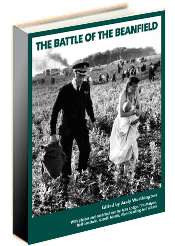

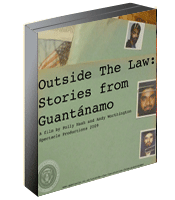






 Who's still at Guantánamo?
Who's still at Guantánamo?
